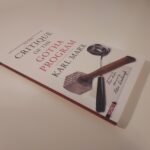Summary: This discussion of the life and thought of one of Latin America’s most important Marxist theorists is a review of In the Red Corner. The Marxism of José Carlos Mariátegui, by Mike Gonzalez [https://www.haymarketbooks.org/books/1165-in-the-red-corner].
In Latin America, José Carlos Mariátegui is one of the most prominent figures of Latin-American Marxism by far. Mike Gonzalez’s 2021 biography introduces the reader to the political trajectory of this early 20th-century Marxist.
Born in 1895 in a Peruvian province, Mariátegui spent large parts of his childhood sick. His illness made it impossible for him to finish his primary education, thus in 1909, he started working at Lima’s central newspaper La Prensa as a printer’s apprentice. Soon he became a reporter for La Prensa and other newspapers. As a self-taught journalist, he started to frequent the more radical circles of Lima and soon found himself among critical artists and anarchists of bourgeois background.
He was deeply moved by the violent injustices the Lima high society so eagerly omitted—be it striking miners or upheavals of the yanacones, a form of Andean bonded labor. After his reports on ongoing social uprisings became too much for the Peruvian state to handle, he was exiled together with another prominent figure of the emerging Peruvian Socialist Left, his friend and collaborator César Falcón.
From 1919 to 1923 Mariátegui spent some of his most formative years in Europe. Based in Italy, he traveled to different European cities and took part in the vibrant political movement of workers and intellectuals of his time. A declared socialist before his departure from Peru, it was his European experience, which centrally shaped his view on the potential of socialism in Latin America.
After his return to Peru, Mariátegui founded the journal Amauta in 1926. The journal’s name was originally Vanguardia, yet the choice of the Quechua word amauta, meaning “the teacher/the wise one”, was deliberate and shows Mariátegui’s deep understanding of how the class struggle in a peripheral country like Peru is intimately linked to the majority population of indigenous peasants and workers.
In 1928 Mariátegui founded the Partido Socialista Peruano—a time when the Stalinized Communist International was putting pressure on him and his comrades to found a Communist Party and align themselves to the Stalinist bloc. Mariátegui refused. For him the creation of a political party under the very hostile conditions of a capitalistically underdeveloped and dependent state needed first and foremost the coming together of all forces hostile to the national ruling class, as well as the international capital interests in Peru. The united front—not the cross-class people’s front promoted by Stalin—was thus central to Mariátegui’s political program for his Peruvian Socialist Party.
Despite a limited amount of biographical data, Gonzalez traces Mariátegui’s central political innovations for a Marxism of the 20th century for Latin America. Here the importance of understanding the racial question as centrally a socio-economic problem stands out. Mariátegui argues for a historicized understanding of the decades-long exploitation and racist legitimization of this towards the indigenous, mostly Quechua or Aymara-speaking populations of the Andean mountain range. He shows the genesis of the dispossession of Andean indigenous populations through colonialism and later imperialism, as well as of Black enslaved populations or the bonded labor of the Chinese koolis. His understanding is that there are remnants of old conquered civilizations within the Quechua and Aymara peasant populations that show a resemblance to primitive communism. Studying the Russian Revolution, he thus concludes that countries like Peru could skip the phase of full-on capitalist development, making a socialist revolution led by workers and revolutionary peasants plausible in the near future.
Another central element of Mariátegui’s form of localized Marxism was the importance he gave to culture in the form of music, poetry, theater, and dance. His journal hosted a number of radical artists among its pages who spoke to the reality and aesthetic of a more indigenous and working-class Peru. To him, the local and cultural specificities of the locale of one’s political activity were central to socialist organizing.
The last important strand that Gonzalez takes up, is Mariátegui’s debate on anti-imperialism with Víctor Raúl Haya de la Torre, the leader of the Alianza Popular Revolucionaria Americana (APRA). While Haya de la Torre argued for joining forces with petty-bourgeois sectors to fight U.S. and European imperialism in Peru and in Latin America at large, Mariátegui made sure to draw his conclusions from the Mexican Revolution, which ended in urban workers being used to combat the uprising of mostly indigenous peasants led by Pancho Villa.
For him, anti-imperialism stems from his Marxism—not the other way around. Mariátegui argued that anti-imperialism as such could not be a political program for a revolutionary party; he foresaw the opportunism of Haya de la Torre’s APRA joining forces against international worker’s solidarity—strengthening the nationalist, supposedly anti-imperialist, national ruling class.
After having his leg amputated and suffering great physical pain throughout his life, in 1930, shortly before he planned to go to Argentina for further treatment, José Carlos Mariátegui died in his Lima home, at only 36 years of age. Mariátegui fought for the unity of urban workers and rural peasants, of all cultural backgrounds. He underlined the centrality of the class antagonism for the development of a program that had to speak culturally to the masses of indigenous, Black, and mestizo workers and peasants of Latin America.
Gonzales traces his central political ideas somehow chaotically. We find certain quotes again and again and other aspects that were explained a chapter before, newly explained in similar words a chapter after. At times this confuses the reader. Still, Gonzalez’s account of Mariátegui as a central political figure, not just for Latin America but for world socialism, is important and has the potential to interest a new generation of English speaking readers, in the politics and thinking of Latin America’s great amauta.




0 Comments